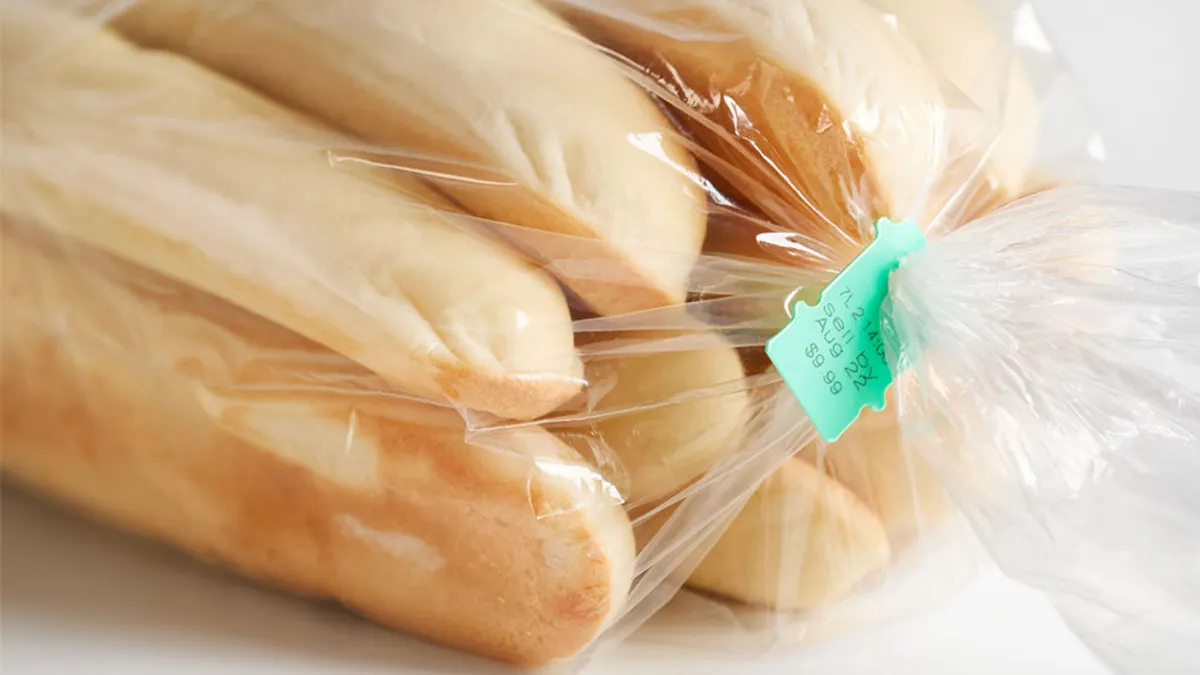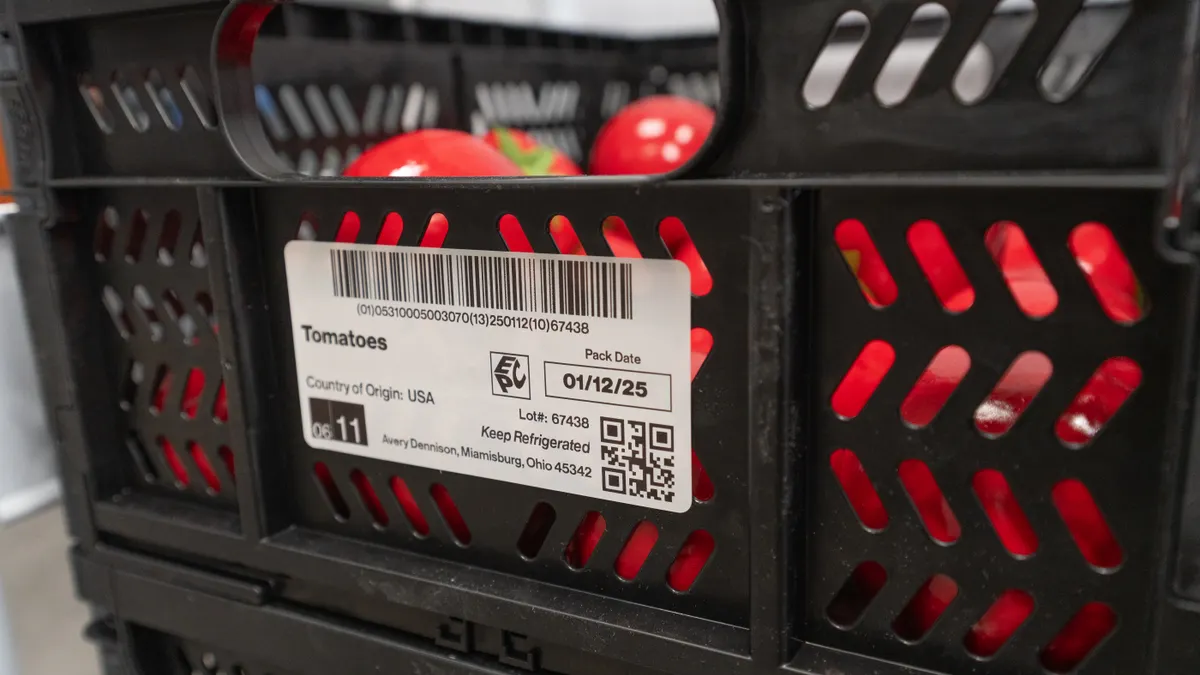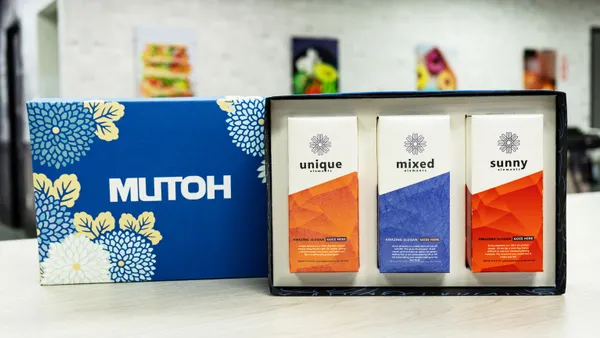Packaging plays a critical role in protecting the safety, freshness, and integrity of food products, which in turn minimizes waste and contributes to overall sustainability.
Research shows that consumers increasingly consider product and packaging sustainability when making purchasing decisions. For example, according to NIQ Retail Measurement and Product Insights data, sales of products with sustainability claims grew 34% more than products without claims from 2018 to 2022.
Consumers know choosing products with the right packaging is important to help them prevent food waste and contribute to their own sustainability efforts. A recent survey by McKinsey & Company found that consumers view food safety and shelf life as the most important attributes when it comes to packaging: 84% of respondents said food safety is extremely or very important, and 75% cited shelf life as extremely or very important. Both figures have risen from previous surveys conducted in 2020 and 2023.
Ease of use and durability are also critical packaging attributes, cited by 62% and 61% of respondents, respectively, as being extremely or very important. Environmental impact also remains a crucial concern, cited by 44% of respondents as being extremely or very important.
According to the report, brands should carefully consider the demands of their products’ end users when designing their packaging solutions and work with their supply chain partners to help them achieve their goals.
The report suggests companies looking to build market share should consider action in four areas:
- understanding the granularity of consumer behavior;
- engaging the full packaging value chain;
- designing packaging to meet the full set of consumer needs and preferences, and
- prioritizing consumer education.
Supporting food safety and shelf life
Packaging closures play a critical role in preserving freshness, and it’s important for companies to ensure they are using the right closures for products that are packaged in bags. Companies should carefully evaluate their needs when it comes to keeping bags closed throughout the supply chain, based on the characteristics of the specific products being packaged.
“A 10 lb. bag of potatoes is going to need a larger, thicker closure than a small loaf of bread,” says Craig Kupp, Regional Sales Manager at Kwik Lok Corp., which supplies a wide variety of bag closure and labeling solutions across the food industry.
Having the right systems in place for applying the closures is also key for minimizing waste on the production line. A well-planned system using the right closures enables companies to operate smoothly and prevents food waste during the packaging process.
Product packaging and closures also need to protect food products from contamination as they travel through the supply chain in different environments. Then, after the consumer purchases the product and brings it to their home, they must be able to easily reuse the closure to help protect product freshness, safety, and integrity.
“That’s very important, and something we pay close attention to at Kwik Lok,” says Kupp. “We make it quite simple—you can quickly take the closure off and clip it back on to keep your food fresh.”
Dating and other information
The ability to print dates and lot numbers on closures is another feature that can be used in product rotation to reduce waste.
Similarly, using color-coded packaging closures can make it even easier for warehouse and store workers to ensure that products are properly rotated. If store personnel can easily see which items are approaching their sell-by date and promote them with marked-down prices, for example, retailers can both drive incremental revenues and prevent the products from becoming waste. Companies can consider using closures in seven different colors, one for each day of the week, so that workers can quickly see which products are nearing expiration. This can be especially useful for bakery items, where products often have a very short shelf life and high turnover.
Even if sell-by dates are also displayed on the packaging itself, printing the dates and lot numbers on the closures provides a secondary source of that information for product rotation and identification. The combination of dating, lot numbers, and color labeling can be a powerful tool for companies seeking to facilitate inventory rotation, minimize waste, improve traceability, and optimize efficiency.
“[Store personnel] can just look at the color and know which items are due to come off the shelves, and they don’t even have to look at the date,” says Kupp. “It just speeds everything up for their sales and merchandising teams.”
Labeling solutions that allow companies to attach tags containing additional information to their bag closures can also provide other benefits. These labels can include marketing messages, cross-promotions, or QR codes that allow shoppers to access digital resources such as sourcing information or further details about the product’s sustainability, for example.
Work with suppliers that support their claims
Companies seeking to optimize their sustainability efforts should closely examine the claims of their packaging suppliers. As consumers increasingly demand to know more about the environmental impact of the products they buy, including their packaging, companies can benefit from providing strong scientific research backing their sustainability claims.
Packaging that can be recycled easily, or that minimizes the use of plastic, can help companies tell a credible story about their sustainability efforts if their packaging solutions suppliers can support their claims with evidence.
The Association to Advance Collegiate Schools of Business, a global organization that seeks to strengthen training for business leaders, recently summarized the importance of authenticity when companies make sustainability claims. To communicate authentically about sustainability initiatives and avoid “greenwashing,” the group said organizations should:
- be specific about their efforts,
- back their claims with data, and
- be transparent about successes and failures.
At the same time, companies that are making strides in sustainability should not shy away from communicating about their efforts, the AACSB noted.
“If you’re a business leader, failing to communicate about your environmental initiatives is like sowing without reaping—like manufacturing products without bothering to sell them,” the group said.
Working with the right packaging suppliers that offer science-backed sustainability solutions can help companies better tell their own sustainability stories.
Visit KwikLok.com today to learn more about how Kwik Lok can help your company operate more sustainably with a range of packaging solutions that minimize waste, optimize profitability, and meet today’s evolving demands for the use of sustainable materials.










